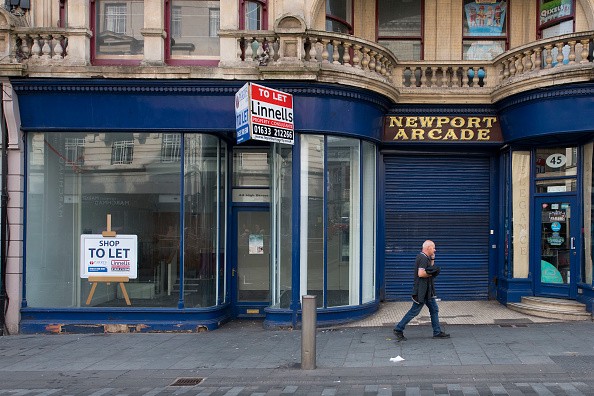Research from national UK estate agent, Keller Williams UK, has found that the demise of the UK’s retail industry has left empty premises with enough space to provide nearly 25,000 homes to a market value of £7.4bn. Keller Williams analysed the potential square footage of thousands of high street stores used by 38 big retail brands to have ceased trading, or that are due to close this year. Based on the average square footage of A1 retail space (2,195 sq ft), Keller Williams estimates that these ongoing closures will leave some 19,735,230 square foot of unused retail space across the UK. With the average UK property coming in at just 790 square feet, this redundant retail bricks and mortar could pave the way for a potential 24,981 new homes. With the current average UK new build valued at £297,104, that’s a huge £7.4bn in new homes that could be developed and delivered to the market, providing a considerable boost to stock supply. Perhaps the biggest retail casualty has been Debenhams and their extensive high street presence would account for the vast majority of the new housing stock potential. The former giant of the UK high street has already liquidated 52 stores with the remaining 45 to close by 15th May this year. These 97 stores are thought to occupy 13,628,740 square feet of retail space, enough for 17,252 homes with a current market value of £5.1bn. CEO of Keller Williams UK, Ben Taylor, commented: “It’s been incredibly sad to see the demise of the high street hastened due to the pandemic, with many big names shutting their doors for good having been unable to survive months on end with no customer footfall. Hopefully, as lockdown restrictions continue to ease we will see a resurgence from the retail sector and some of these former premises can once again be used as intended. However, it’s becoming abundantly clear that we simply don’t shop in the same way we used to and so physical retail outlets are likely to remain largely redundant in many high streets up and down the nation. At the same time, we’re seeing a lack of housing stock failing to satisfy the appetites of UK homebuyers, while housebuilders and the government continue to fail year on year in meeting delivery targets. Developing unused retail space into housing could be a great way of repopulating our high streets, if only from a social standpoint, while also delivering some sorely needed housing stock to the market.” Brand Expected, potential & confirmed store closures Estimated available space for conversion to housing (sq ft) Potential number of homes if converted Potential value of new homes Debenhams 97 13,628,740 17,252 £5,125,513,931 Arcadia Group (Burton, Topshop, Dorothy Perkins, Miss Selfridge, Wallis, Evans) 440 965,800 1,223 £363,219,296 Peacocks 423 928,485 1,175 £349,185,824 Poundstretcher 250 548,750 695 £206,374,600 Brighthouse 240 526,800 667 £198,119,616 Bonmarche 226 496,070 628 £186,562,639 Age UK 133 291,935 370 £109,791,287 Paperchase 127 278,765 353 £104,838,297 Oak Furnitureland 105 230,475 292 £86,677,332 Oasis and Warehouse 92 201,940 256 £75,945,853 Jaeger 76 166,820 211 £62,737,878 DW Sports 75 164,625 208 £61,912,380 Laura Ashley 70 153,650 194 £57,784,888 TM Lewin 65 142,675 181 £53,657,396 Edinburgh Wollen Mill and Ponden Mill (EWM Group 64 140,480 178 £52,831,898 Kath Kidston 60 131,700 167 £49,529,904 Oddbins 56 122,920 156 £46,227,910 M&Co 47 103,165 131 £38,798,425 Hearing and Mobility (HHML) 27 59,265 75 £22,288,457 Victoria’s Secret (UK) 25 54,875 69 £20,637,460 Beales 22 48,290 61 £18,160,965 Harveys Furniture 20 43,900 56 £16,509,968 Hawkins Bazaar 20 43,900 56 £16,509,968 Antler 18 39,510 50 £14,858,971 Jessops 17 37,315 47 £14,033,473 Johnson’s Shoes 12 26,340 33 £9,905,981 Peter Jones (China) 10 21,950 28 £8,254,984 Le Pain Quotidien 10 21,950 28 £8,254,984 Norville Group 9 19,755 25 £7,429,486 Soletrader 8 17,560 22 £6,603,987 Oliver Sweeney Trading 7 15,365 19 £5,778,489 J Crew 6 13,170 17 £4,952,990 TJ Hughes outlet division 6 13,170 17 £4,952,990 Aldo (UK) 5 10,975 14 £4,127,492 Brooks Brothers (UK) 4 8,780 11 £3,301,994 The Hummingbird Bakery 3 6,585 8 £2,476,495 Autonomy Clothing 3 6,585 8 £2,476,495 DVF Studio 1 2,195 3 £825,498 All 2879 19,735,230 24,981 £7,422,050,482 Sources Based on store numbers multiplied by average size of A1 retail space at 2,195 sq ft Based on estimated available space divided by the average UK house size of 790 sq ft Based on the number of potential homes multiplied by the current average new build house price of £297,104 Note: Debenhams was the only value not based on the average size of retail due to available date on the total square footage of their stores














